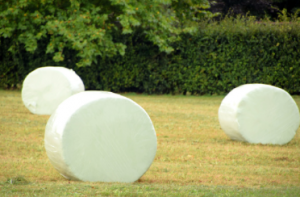Silage film production is vital for the proper storage of agricultural feeds, and the preservation of animal feeds for consumption by consumers. It is made from cellulose powder and is known by the name silage, bale or pile film. A silage producer can create bale rolls or silage film by mixing cornmeal, aluminium oxide, or baking soda with or without vegetable oil.
 The thickness of the roll will determine the amount of UV protection the film has. The higher the number of layers, the more UV protection the film possesses. Typically, the rolls of silage film are available in lengths up to nine hundred feet. If you have an immense need for UV protection, you can opt to purchase rolls with a greater thickness.
The thickness of the roll will determine the amount of UV protection the film has. The higher the number of layers, the more UV protection the film possesses. Typically, the rolls of silage film are available in lengths up to nine hundred feet. If you have an immense need for UV protection, you can opt to purchase rolls with a greater thickness.
The required size and thickness of a roll of silage film are dependent on the intended application. You can choose an appropriate wrapping technique to achieve the desired outcome. The simplest wrapping technique involves overlapping one sheet of film with another. However, if you plan to have several bales or stacks rolled simultaneously, you will need to obtain a rolling machine that allows you to place one roll after the other without gaps or holes.
Because NetWrap silage film is made from cellulose powder, it is beneficial for preserving forage, hay, or corn. By placing the product within a protective covering, the nutrients from the plant material are preserved for later use. The nutritional value of these products is the major benefit provided by using silage wraps. However, some foods with low nutritional value are not suitable for this type of packaging, such as wheat products.
To fully preserve these products, they should be kept in the dark and air-tight environment provided by the silage film. Without the protection of the film, moisture would penetrate the merchandise, which could greatly affect the nutritional value. Most experts agree that the product is safe to eat even when kept under dry conditions. The only circumstance when consuming the film would become risky is when the temperature inside the storage room rises above 100 degrees Fahrenheit. This scenario could result in the formation of frostbite, especially if the person is wearing no special gloves.
NetWrap silage film is also useful for preserving hay since the product has a high moisture content. The individual mustn’t try to heat or moisten the roll. When exposed to excessive heat, the roll might split or get damaged, resulting in wasted rolls. Likewise, silage cast films do not burn easily, even when exposed to flames. Therefore, it can be used to create rolls suitable for storage and shipping purposes.
Forage is a by-product of sugarcane juice, which is processed to make ethanol and fuels. By preserving forage, the end-users are also given an eco-friendly way to make their energy. The silage film forage is an ideal replacement for traditional forage as it is sustainable, ecologically sound, and cheap to produce. This product can be marketed both locally and nationally, making it a viable choice for those looking to promote a greener way of life. The silage film is also resistant to insects, which makes it perfect for crop and agricultural produce. Since it is made from natural resources, no chemical additives are needed to prolong its shelf life.
Silage film manufacturers offer a variety of different sizes and colours for different applications. Since the film is transparent, it allows visibility into the interior of the structure. For this reason, the wrapping film can also be used as an environmentally friendly material that saves both time and money. Moreover, it is an affordable solution for per pallet and larger quantities packaging.